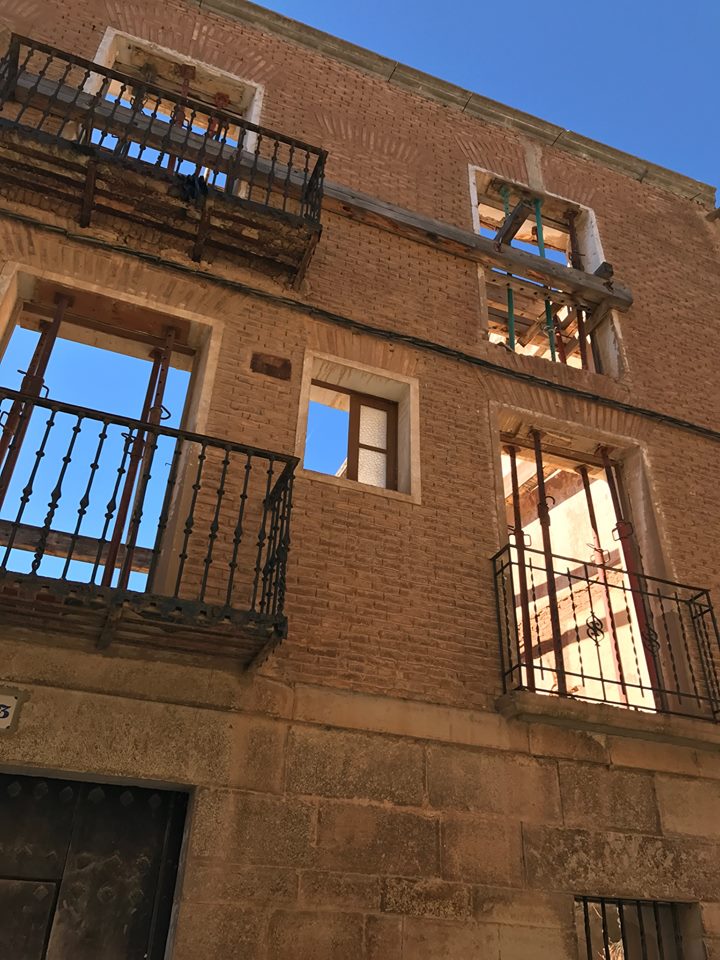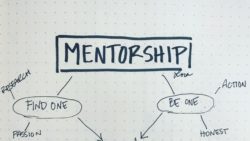Gaining Experience As A Young Architect
Whether filling out hours for AXP (Architectural Experience Program) or trying to learn enough to work your way up to Project Manager, gaining experience on a new topic can be tricky as a young architect or architect-in-training.
Note: This is the thirty-ninth post in a group series called #ArchiTalks. This month’s topic is “Experience”

There’s a double-edged sword when starting a career of needing vs having experience. You need to learn, but the person you work for wants you to already have that experience so that you can operate somewhat independently. But how do you get that experience if you’ve never been given it? Vicious circle.
The ability to gain experience is an important piece of mentorship in any firm, but one that can be easily overlooked. It’s good business to want to make sure an employee is efficient in their work and working within their best skillset, but it’s even better business to see the employee as more than just a cog in the larger system. Giving people time and space to gain experience in new topics or specific aspects of a project process or construction detail not only will make them more efficient and knowledgeable on future projects, but also shows that you value them and keeps them learning and engaged.
Having said that, there are things you can do as the young architect to gain experience. Let’s look at a few:
Gaining experience outside the architecture office
1. AIA
Being involved in the AIA has only helped my career. I can directly link my current job at RATIO, my volunteer leadership positions, and different project opportunities I’ve received to my participation in the AIA. It is an organization where – listen carefully – **you get out of it what you put into it**.
- You want experience in Custom Residential? There’s a knowledge group for that.
- You want to learn about leadership? Check out a monthly meeting and talk to firm leaders, find a mentor, or attend one of many leadership-based conferences or workshops.
- You want to get experience in resilient design? There’s a group, a task force, a knowledge community, and tons of CEUs to help you down that path.
The world is your oyster in the AIA when it comes to gaining experience in different categories. You just have to step into the water and go for it.
2. Read
I talk about the importance of reading on this blog a lot. And I mean A LOT. It literally came up in my last ArchiTalks post. The think about reading and looking at different design blogs and articles for inspiration is that you are giving your brain creative food to chomp on while you work.
As architects, we understand how much our work overlaps/touches/links to many other topics. Because of the process of learning and studying this way through college and in work, our brains start to make these connections on their own. When you read a technical article or look at the great design of another architect, you’re taking these nuggets of wisdom and storing them in the grey matter between your ears. While you’re working on something else, or eating lunch with friends, or walking your pup, guess what? Your subconscious is working through that and making connections for you. You’ve got to exercise and feed that grey matter. If you do, you’ll gain experiences and learn about that construction detail so that you’ll be ready for that on-project experience and can share your knowledge.

3. Travel
The importance of travel cannot be overstated. As architects, we don’t just see our surroundings. We experience, soak up, seek to understand, compare, touch, and document our surroundings. This comes out very acutely in all of its forms when we travel. I’ve previously joked about my dating profile disclaimer that I come with a travel warning.
The above picture is from day 7 of hiking the Camino de Santiago, walking through Los Arcos during siesta. The streets were sleepy, the sun warmed my skin, and I was only too eager to take in the historic town in varying stages of decay and repair. These bolstered facades are a common sight in Spain, but rare in my midwest life. Travel gives you the experience of new places, cultures, and insights all at once. It’s the best way to learn, in my humble (and wanderlusting) opinion.
Experience comes in many forms and can teach you many things. With each new experience comes a new _____. It’s literally up to you to decide what you want to learn and where you want your path to head. Pick up a book, chat with a mentor, travel to a new place, volunteer in your community. All of these things will give you experience in so many different categories that are applicable to the world of architecture.
What’s your next experience going to teach you?
To see the take on “Experience” from other Architects, follow the links to the others in the #ArchiTalks group who are posting today on the theme:
- Lee Calisti, AIA – Think Architect (@LeeCalisti) “experience comes from experiences”
- James Mehaffey – Yeoman Architect (@jamesmehaffey) “Experience”
- Eric Faulkner – Rock Talk (@wishingrockhome) “That’s Experience — A Wise Investment”
- Michele Grace Hottel – Michele Grace Hottel, Architect (@mghottel) “Experience”
- Jeffrey Pelletier – Board & Vellum (@boardandvellum) “Channeling Experience: Storytelling in the Spaces We Design”
- Mark Stephens – Mark Stephens Architects (@architectmark) “Experience”
- Brian Paletz – The Emerging Architect (@BPaletz) “You Need To Get It”
- Jeremiah Russell, AIA – ROGUE Architecture (@rogue_architect) “Knowledge is not experience”
- Keith Palma – Architect’s Trace (@cogitatedesign) “The GC Experience”
- Leah Alissa Bayer – Storytelling LAB (@leahalissa) “Four Years In: All Experiences Are Not Created Equal (Nor Should They Be)”




